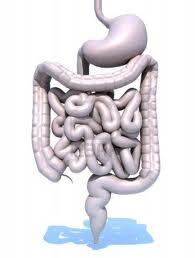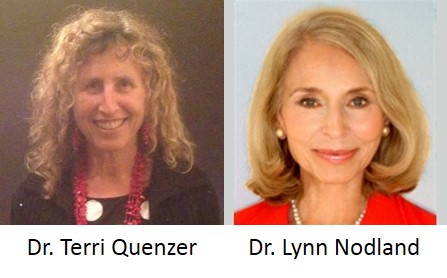
Let’s take a little adventure through your digestive tract and find out what happens in there!
To begin with, your digestive tract is really nothing more than a very long tube that runs through your body with openings on two ends, your mouth, and, well, you know the other end.
Digestion is simply the breakdown of food into smaller components that can be absorbed into the blood stream. Mechanical processes such as chewing or churning smash and break food down into smaller pieces. Chemical processes break large food molecules into smaller molecules. Both processes release nutrients from the food.
Assimilation follows digestion. Nutrients that are released from the food get absorbed into the blood stream and transported to cells throughout the body to perform their various functions.
Once you’ve chewed your food thoroughly (or maybe just inhaled it) and then swallowed, the bolus of food moves from the back of your throat down to your stomach through your esophagus, a tube that’s about 10 inches long and just over ¾ of an inch in diameter. Although it feels like gravity is making the food drop down from your throat into your stomach, that’s not actually what’s happening. Rather a series of contractions in your esophagus creates a pressure gradient that pushes the bolus of food ahead of it, taking roughly 10 seconds to reach your stomach, even if you’re upside down! As the bolus of food moves through your esophagus, the saliva that’s mixed with the food serves as a lubricant and also continues to digest carbohydrates, breaking them down into simple sugars.
Your stomach is a stretchy sack shaped like the letter “J” that’s attached to the end of your esophagus. Your stomach, which can hold more than a liter of food (roughly a quart), takes over the job of digestion started in your mouth. You can think of your stomach as being like a cement mixer. Strong muscular contractions in your stomach produce a mixing, churning, and crushing effect to further break down food (mechanical digestion) as gastric juice secreted by your stomach converts the food into a semiliquid mass called chyme.
Gastric juice is a mixture of water, hydrochloric acid, electrolytes, and enzymes (pepsin) that is highly acidic, with a pH of 1-2, which is roughly 300,000 to 3,000,000 times more acidic than your blood (pH 7.35 – 7.45). The acid and enzymes in gastric juice cut proteins (very large amino acid chains) into much shorter amino acid chains (peptides).
Your stomach empties the chyme into your small intestine where even more digestion takes place. The speed at which your stomach empties depends on what you ate. Liquids empty faster than solids. And of the solids, carbohydrates are the fastest to empty, followed by proteins, and finally fats, which are the slowest to empty. So proteins and fats sit in your stomach the longest.
Your small intestine is a tube that’s about 2 inches in diameter, and if it were completely stretched out, would be about 22 – 25 feet long! The first 10 or so inches of your small intestine, the duodenum, is where most of the chemical digestion takes place. Bile that’s produced in the liver and stored in the gallbladder is secreted into the duodenum and acts as a surfactant to help emulsify and digest fats. Besides controlling glucose metabolism, the pancreas secretes digestive enzymes as needed into the duodenum that break the peptides down into amino acids (e.g., trypsin, chymotrypsin, carboxypeptidase), break fats down into fatty acids and glycerol (pancreatic lipase), and break carbohydrates (mostly starches) down into simple sugars (pancreatic amylase). The pancreas also secretes bicarbonate into the duodenum to neutralize the acidic chyme while the bile secreted by the liver neutralizes gastric acid coming from the stomach.
Most of the nutrients released by digestion in the duodenum get absorbed into the blood stream through the middle section of the small intestine, the jejunum, which is specialized for absorption. The jejunum (middle intestine) is about 10 feet long and has a neutral or slightly alkaline pH (pH 7 – 9). The inner wall of the jejunum (mucosa) is covered wrinkles or folds plus microscopic finger-like tissue (villi and microvilli), all of which increase the amount of surface area available to absorb nutrients.
The final and longest section of the small intestine, the ileum, is 8 – 16 feet long and absorbs vitamin B12, bile salts, and any nutrients that were not absorbed by the jejunum. The pH of the ileum is similar to that of the jejunum (pH 7 – 9).
The nutrient-rich blood gets processed by the liver before the nutrients are assimilated throughout the body or stored. Toxins are processed by the liver for elimination by passing through either the small intestine or the kidneys.
Attached to the ileum at the end of the small intestine is the large intestine, which is roughly 5 feet long and about 3 – 4 inches in diameter. The large intestine includes the cecum, appendix, colon, and rectum. The waste that remains after all the nutrients have been removed and absorbed by the small intestine goes on to the large intestine, which absorbs water and any remaining minerals from the indigestible food residue, leaving behind hardened feces, which are stored in the rectum and then eliminated. The large intestine also has the majority of bacteria that reside in your digestive tract. These bacteria help stimulate digestion of food and absorption of nutrients, destroy toxic digestive byproducts, and synthesize vitamin K.
According to Wikipedia, the entire process from end to end can take between 24 and 72 hours. It takes about 6 – 8 hours for food to pass through your stomach and small intestine. The rest of the time is spent your large intestine before you finally eliminate (poop) the undigested food.
When I worked in the pharmaceutical industry, I used to routinely use mass spectrometry to identify proteins by analyzing the amino acid sequence of the proteins. In order to do that, I had to digest the proteins by simulating the digestion process I just described, only inside of a tube. In other words, I created a set of conditions similar to those in our stomach and small intestine, using some of the same enzymes (pepsin, trypsin, and chymotrypsin) and pHs to activate the enzymes (strongly acidic for pepsin, as in the stomach; slightly alkaline for trypsin and chymotrypsin, as in the small intestine). It made me appreciate the “lab” inside our bodies that automatically do these processes without us even being aware of what is going on!
The good news is that you don’t have to be a scientist to digest your food! And the next time it comes out, you will know exactly where it's been and what happened to it!
Resources
- http://www.britannica.com/EBchecked/topic/1081754/human-digestive-system
- http://kidshealth.org/kid/htbw/digestive_system.html#
- http://en.wikipedia.org/wiki/Gastric_acid
- http://en.wikipedia.org/wiki/Digestive_enzyme
- http://en.wikipedia.org/wiki/Duodenum
- http://en.wikipedia.org/wiki/Jejunum
- http://www.innerbody.com/image_c1/card10-new.html
- http://en.wikipedia.org/wiki/Ileum
- http://en.wikipedia.org/wiki/Digestion
- http://www.mayoclinic.com/health/digestive-system/AN00896
- http://healthyeating.sfgate.com/happens-digestion-good-bacteria-body-out-balance-2678.html



 RSS Feed
RSS Feed